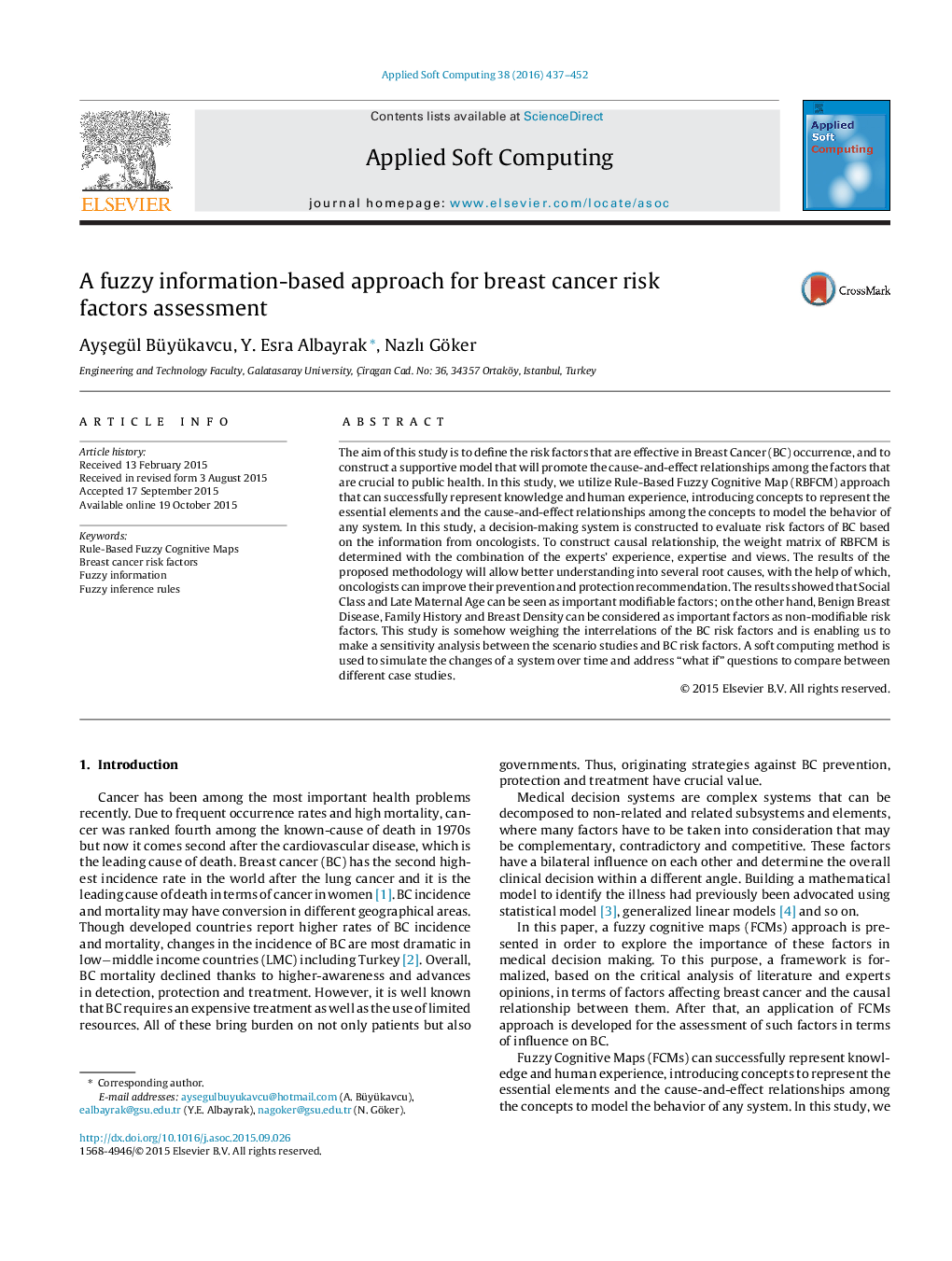| Article ID | Journal | Published Year | Pages | File Type |
|---|---|---|---|---|
| 494876 | Applied Soft Computing | 2016 | 16 Pages |
•Identifications of modifiable and non-modifiable factors that are contributing to the occurrence of breast cancer.•A computer-aided approach to understand and to better evaluate root causes of breast cancer.•Determination of these factors’ weights that can help breast cancer oncologists.•An useful and efficient model to recommend preventive and protective treatments for breast cancer.•Analysis of the results in different scenarios.
The aim of this study is to define the risk factors that are effective in Breast Cancer (BC) occurrence, and to construct a supportive model that will promote the cause-and-effect relationships among the factors that are crucial to public health. In this study, we utilize Rule-Based Fuzzy Cognitive Map (RBFCM) approach that can successfully represent knowledge and human experience, introducing concepts to represent the essential elements and the cause-and-effect relationships among the concepts to model the behavior of any system. In this study, a decision-making system is constructed to evaluate risk factors of BC based on the information from oncologists. To construct causal relationship, the weight matrix of RBFCM is determined with the combination of the experts’ experience, expertise and views. The results of the proposed methodology will allow better understanding into several root causes, with the help of which, oncologists can improve their prevention and protection recommendation. The results showed that Social Class and Late Maternal Age can be seen as important modifiable factors; on the other hand, Benign Breast Disease, Family History and Breast Density can be considered as important factors as non-modifiable risk factors. This study is somehow weighing the interrelations of the BC risk factors and is enabling us to make a sensitivity analysis between the scenario studies and BC risk factors. A soft computing method is used to simulate the changes of a system over time and address “what if” questions to compare between different case studies.
Graphical abstractFigure optionsDownload full-size imageDownload as PowerPoint slide
